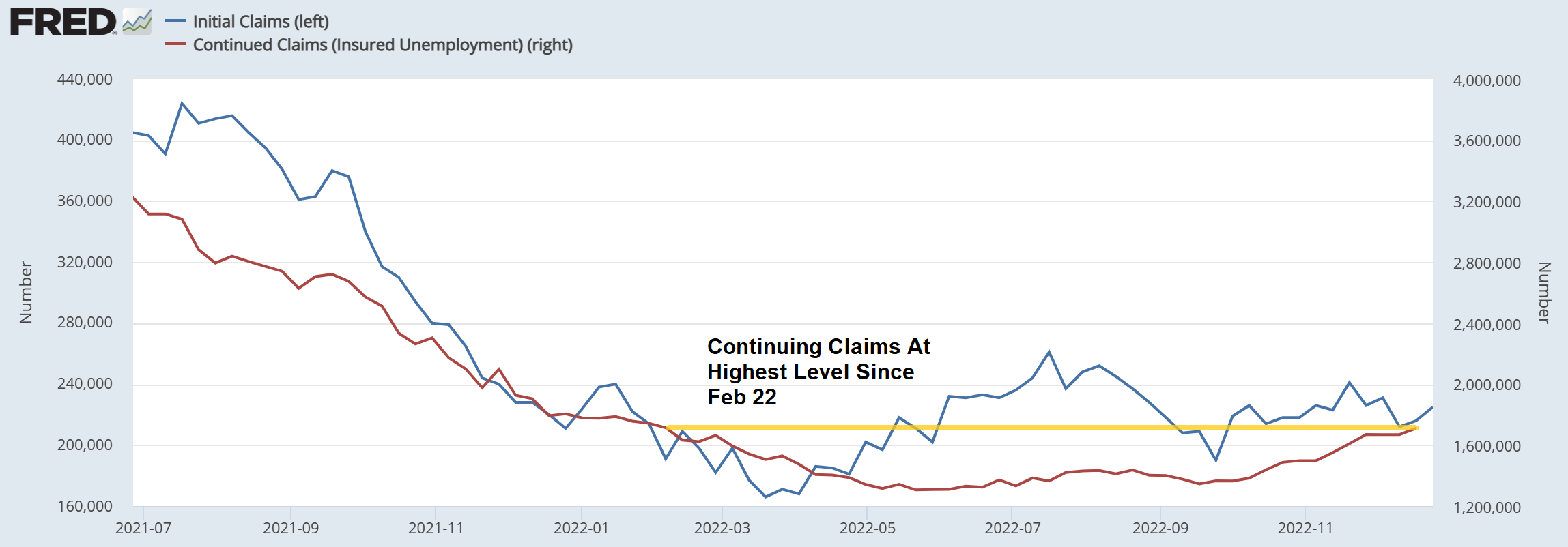Stocks rallied strongly this morning as bulls attempted to finish off an otherwise dismal year on a high note. The Dow, S&P, and Nasdaq Composite all gained while yields slipped. The 10-year Treasury yield fell to 3.83%, down from a high of 3.88% yesterday.
Navellier & Associates founder Louis Navellier called it a “one-day version of a Santa Rally.”
“We were overdue for a rebound, and a lot of the recent weakness may be explained by further tax loss selling once the Santa Rally didn’t materialize,” Navellier said.
“We’ll have further volatility into the new year with plenty of uncertainty about whether a soft landing is possible and if not how much resolve the Fed will have to not pivot if we tip into a serious recession.”
Investors are no longer asking “if,” but “when” a recession will arrive. We said earlier this year that a recession already hit when the US logged two quarters of negative real GDP growth (-1.6% in Q1, -0.6% in Q2). Q3 saw a gain of 2.9%, but it was entirely driven by an unsustainable surge in gas and weapon exports to Europe.
Will that narrative hold, though?
“Many factors historically have driven the traditional environment supportive of year-end stock rallies, such as the investing of holiday bonuses, a seasonal optimism among consumers and investors, and tax considerations,” said AXS Investments CEO Greg Bassuk.
“However, with 2022’s dismal stock and bond performance expected to carry into 2023, along with ongoing inflationary concerns, uncertain Fed policy, and lingering geopolitical tensions, investors won’t be receiving any holiday gifts this year for their portfolios.”
Nonetheless, many analysts believe the US economy can achieve a “soft landing” next year.
“Investors are anticipating an economic recession to materialize early in 2023, as evidenced by the three quarters of projected S&P 500 earnings declines and continued defensive sector leanings,” explained CFRA Research strategist Sam Stovall.
“The severity of the recession remains in question. We expect it to be mild.”

First-time unemployment filings jumped from 216,000 to 225,000 last week while continuing claims approached an 11-month high at 1.71 million. This is the 11th straight week that continuing claims have risen, suggesting that Americans who lost jobs recently are struggling to find new ones.
This implies that US labor is likely weaker than indicated by the last few jobs reports.
Bulls would love for that to be the case, as Fed Chairman Jerome Powell has repeatedly pointed to US labor resilience as a reason to keep rates elevated.
More important than that, though, is the inflation rate (7.1%) which remains well above target (2.0%). Powell wants to hold rates at elevated levels until inflation gets closer to 2.0%. A cooler-than-expected jobs report won’t do the trick on its own.
In that way, bulls may be overestimating the impact of a jobs “miss.” Because if the Fed continues to raise rates while payrolls plummet, the market will enter “hiking into a stiff recession” territory, which nobody wants besides Powell & Co.








